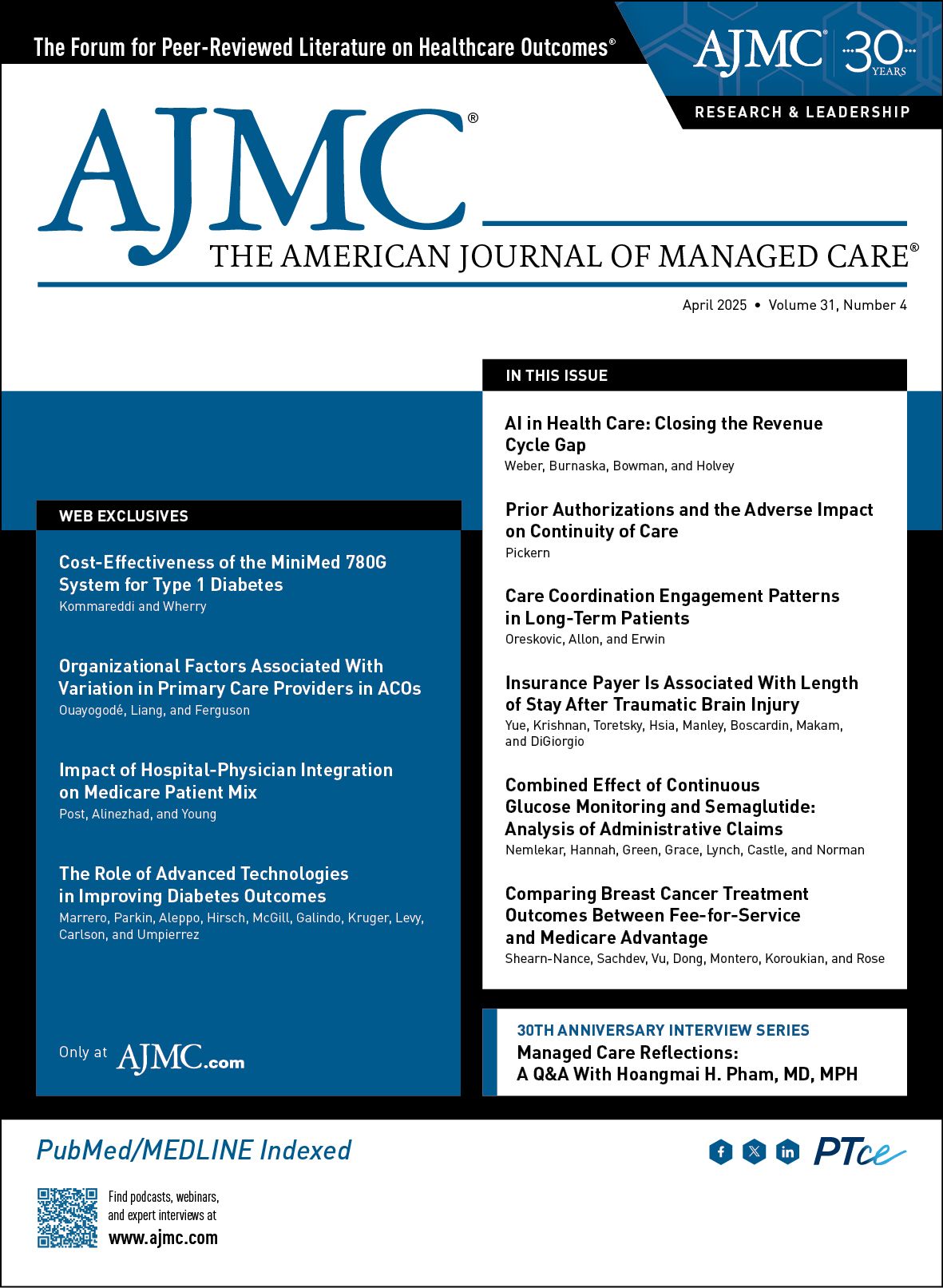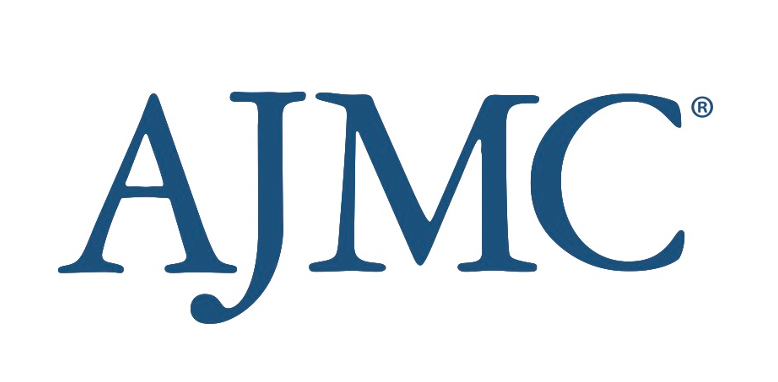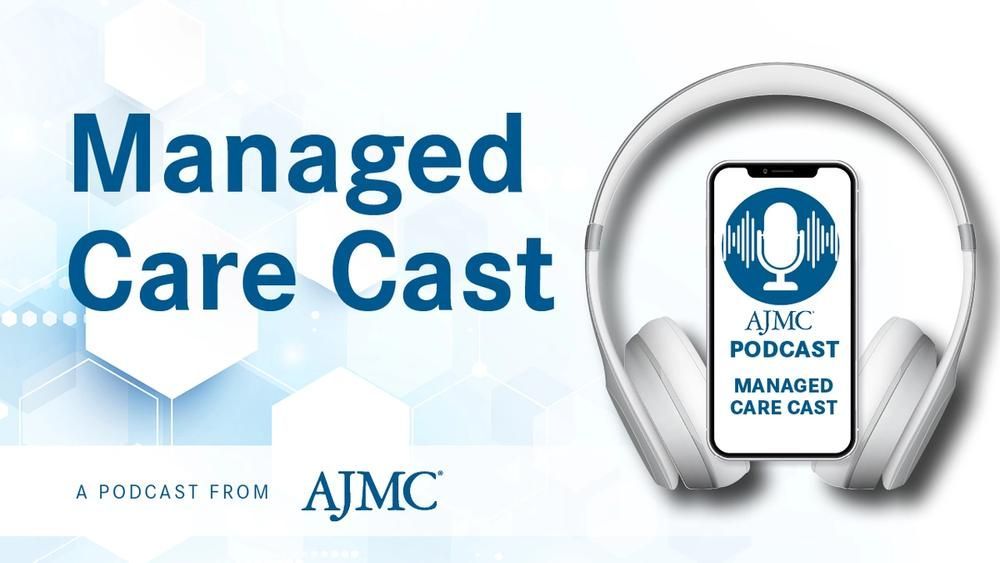Publication
Article
The American Journal of Managed Care
Managed Care Reflections: A Q&A With Hoangmai H. Pham, MD, MPH
Author(s):
To mark the 30th anniversary of The American Journal of Managed Care® (AJMC®), each issue in 2025 will include a special feature: reflections from a thought leader on what has changed—and what has not—over the past 3 decades and what’s next for managed care. The April issue features a conversation with Hoangmai H. Pham, MD, MPH, a member of AJMC’s editorial board and the president and CEO of the Institute for Exceptional Care (IEC).
Am J Manag Care. 2025;31(4):159-160. https://doi.org/10.37765/ajmc.2025.89716
AJMC: How has the concept of managed care and the conversations around it changed over the past 30 years?
PHAM: On the positive side, it has become a familiar way of life for American consumers, so there isn’t the vilification that had been going on in the 1990s. On the other hand, we seem stuck in this cycle of conceding to maintaining as much choice as possible for patients through PPOs [preferred provider organizations] and Medicare—traditional Medicare is the world’s largest PPO—and elements like self-referrals and such. But we seem not to have gotten any better at producing the outcomes that we need while at the same time consuming an ever-larger amount of resources in the country.
We’re getting something wrong in the balance between how we manage care and what kind of care we manage and what management of care means. It has come to mean in the public’s mind—and they are not wrong—claims denials and administrative groups designed to slow down payments and make access more difficult in order to maintain some control from the plan’s perspective on medical spend. I think the picture has gotten both more entrenched and more complicated. Despite a lot of positive progress in policy experimentation, payment experimentation, and care delivery experimentation and innovation, we seem stuck in this place of mistrust with the public. It may not be directed at managed care in particular, but managed care is not immune to it.
AJMC: What changes do you see taking place in managed care over the coming years?
PHAM: I predict we will stay pretty much in this holding pattern, except perhaps with an acceleration of Medicare Advantage [MA]. Although there are mixed signals from the new administration, I think that there is, generally speaking, a business-friendly environment that favors health plans in MA. On the other hand, you have a CMMI [Center for Medicare and Medicaid Innovation] director coming in and an HHS secretary who feels strongly about addressing risk coding and other arbitrage opportunities, so that will be interesting to see play out.
I think that, at some point, something may break with consumers. I think that the unfortunate circumstances around [UnitedHealthcare CEO] Brian Thompson’s death will not stop there. I think there’s a lot of rage out there that is not particularly well targeted right now, but it’s not without reason. The industry likes to say that there’s a lot of soul-searching going on, but I have not seen any meaningful efforts to actually address consumer mistrust and the burdens of medical debt and service denials, which are very poorly tracked, if at all—not the denials themselves, but the real-world clinical and life impacts on people.
AJMC: Back in 2012, you and your colleagues wrote in AJMC about the facilitators and barriers to care coordination agreements.1 Since then, what progress has been made in improving care coordination? Where is there still room for improvement?
PHAM: We have a lot more tools now than we used to. We have more supportive technology within health care delivery systems that consumers and patients can access directly, whether peer-to-peer support or self-directed apps that help them find the resources they need. At IEC, we’ve even designed an app that helps them to convey their most critical information about themselves, like “how to take care of me,” to providers who don’t know them and hence try to knit together some of the decisions being made by various providers. You [also] have health information exchanges and all of that. I think it has had a modest positive impact on people’s experiences on the ground. There’s more potential there to be tapped, especially with the advent of generative AI [artificial intelligence] and AI agents, and maybe we can get somewhere.
I think the real challenge, though, is that the service providers who tend to end up being at the hub of coordination—so think about primary care practices and social workers and home- and community-based service providers—are the least well resourced in the system, and we’re not going to get very far even with supportive tools and technology if we don’t empower them with more time and better financing and resources to really focus on this. In the absence of that, we are actually worsening the divide between the haves and the have-nots. Because for consumers and patients who have, although it’s exhausting for them, they at least have the wherewithal to either get private help or do it themselves, and the people who don’t can’t. I’m worried that we’re seeing a worsening divide in access to meaningful care navigation.
AJMC: In recent years, much of your work and research has focused on improving care for people with intellectual and developmental disabilities (IDD), including youth with autism. How have you integrated your experiences at CMMI and Anthem and those learnings on value-based care into this area of work?
PHAM: I have 2 responses to that. One is that what I bring from my previous experiences is a systems approach to understanding where the gaps and leverage points are for improving outcomes for people with disabilities. We’ve narrowed our diagnosis to lack of an adequately prepared clinical workforce; lack of effective care models that can scale, including some of those new tools and technologies; and lack of appropriate financing and payment. By that, we don’t necessarily mean more financing and payment—although that may be the case for certain types of services such as primary care—but we mean that it’s not being aimed very effectively right now. And so bringing that systems approach and understanding how market dynamics shift those will allow IEC to strategically think about how to not only develop solutions for improving how care is taught, delivered, and paid for but also to find the right partners to scale those solutions and hardwire them into the system.
For example, it’s not just creating new training resources for clinicians. It’s also working with accrediting bodies, professional societies, and disability groups to get those into educational requirements and programs and driving culture change campaigns. We could sit in a dark closet for 30 minutes and craft a value-based payment arrangement for people with IDD; it wouldn’t be particularly meaningful because, as former payer actors and also clinical actors, we know that you need certain ingredients to make a rational payment model, and we don’t have those in the IDD space. We don’t have data that we can trust. We don’t have a consensus-quality rubric that is meaningful to the community, and we don’t have any viable budget-setting risk-stratification approach that smartly and quantitatively takes into account the relationship between clinical services and nonclinical services. We can theorize that whether an autistic adult gets vocational support will have some impact on their risk of showing up in the emergency department with a mental health crisis, but no one’s actually done the research, and so we have to go about doing that research. The short answer is it’s bringing all of that understanding of systems to try to find the most efficient path to practical solutions that can scale.
The other answer I would give is that my experience in founding and running IEC and learning from our community partners informs my broader health policy work as much as the other way around, and I have learned so many things. It’s been a vertical learning curve, but among the most important things I have learned, through experience and not just theory, is that really hearing community members, listening to and hearing them and translating their insights from their lived experience into health care solutions in partnership with health care leaders, actually (1) gets you to much better design solutions and (2) seems to end up saving time and money because you’re not then trying to fix mistakes in your design afterward, and it begins to rebuild trust in health care, which is how we started this interview. One of the ways you rebuild trust is to give people agency, not just in their own personal care but also in how the system is designed. And that’s been one of the joys of doing this work.
We view the opportunity to authentically engage community members in program and policy design as ripe territory for managed care plans. They all have some form of advisory councils, but we wouldn’t necessarily call that authentic engagement unless you’re providing all the kinds of supports and role modeling and cultural coaching and setting group norms and payment—paying community members for their participation and bringing them in from the beginning and democratizing understanding and access to decisions about complex topics. Unless you’re doing all of that, you’re leaving a ton of opportunity on the table to improve very basic things like, say, open enrollment processes or how your care managers can work with people in your population or innovations. That app that I mentioned, health plans are eager to use that. They were at the table helping to design it, and they know that it would be appealing to their members. Why? Because real people from the community sat in on the design and drove it. There’s not a lot that we can do to change the macroenvironment as individual organizations, but within our own spheres of work, we can certainly make these types of relatively modest investments, rebuild trust, and get the benefits of better solutions for our problems.
REFERENCE
1. Carrier E, Dowling MK, Pham HH. Care coordination agreements: barriers, facilitators, and lessons learned. Am J Manag Care. 2012;18(11):e398-e404.

Newsletter
Stay ahead of policy, cost, and value—subscribe to AJMC for expert insights at the intersection of clinical care and health economics.


